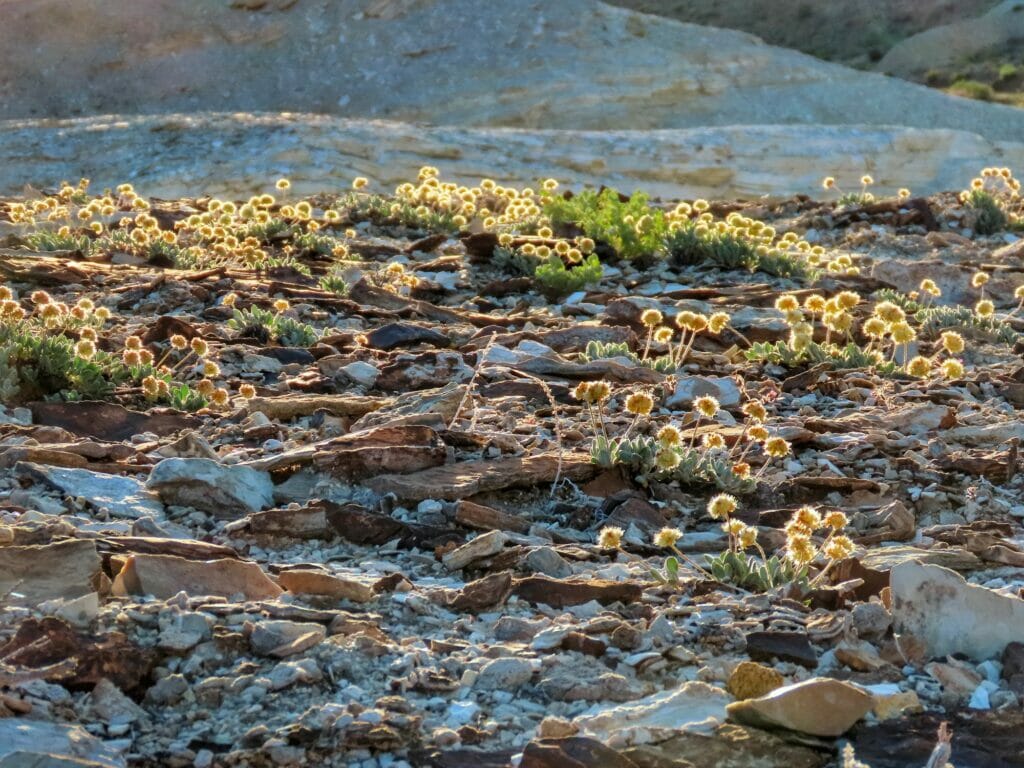Feds OK Nevada lithium mine expected to greatly boost production of the critical mineral

A remote mountain range in southwestern Nevada will soon be home to Nevada’s third lithium mine, federal officials announced Thursday.
Ioneer, an Australian mining company, can begin work on its Rhyolite Ridge project, slated for 7,200 acres in the Silver Peak Range between Tonopah and the tiny community of Dyer. With construction beginning in 2025 and production targeted for 2028, it is expected the mine will produce enough lithium, a mineral touted as critical to the clean energy movement, to power roughly 370,000 electric vehicles each year.
“The Rhyolite Ridge lithium mine project is essential to advancing the clean energy transition and powering the economy of the future,” Acting Deputy Secretary of the Interior Laura Daniel-Davis said in a press release.
The decision wraps up more than six years of planning and permitting efforts by Ioneer, as well as a lawsuit about whether the mine would harm the endangered Tiehm’s buckwheat, a diminutive plant known to grow only at the mine site.
“By greenlighting this mine, the Bureau of Land Management is abandoning its duty to protect endangered species like Tiehm’s buckwheat and it’s making a mockery of the Endangered Species Act,” said Patrick Donnelly, Great Basin director at the Center for Biological Diversity. “We need lithium for the energy transition, but it can’t come with a price tag of extinction.”
The mine is expected to be in operation for roughly a quarter century, with construction taking four years, quarrying occurring for 17 years and reclamation and closure taking another six years. Residents of neighboring communities have largely rallied around the project, estimated to bring hundreds of jobs and millions in revenue to Esmeralda County, Nevada’s least-populated county.
Related: Vegas-sized solar project could come to Nevada's smallest county; residents not thrilled
During construction, around 500 employees are expected to be hired and the mine could contribute anywhere from $15 million to $25 million in local government and state taxes. Once operational, the mine is expected to employ 350 workers and contribute between $13 million and $35 million annually.
The project’s go-ahead comes on the heels of the 2021 permitting of Thacker Pass, a site that is on track to become Nevada’s second operational lithium mine. Thacker Pass faced numerous legal challenges from environmental activists and tribes who say the site was home to a massacre more than 150 years ago. Located north of Winnemucca near the Oregon border, that project is in the early stages of construction.
Once operational, Rhyolite Ridge and Thacker Pass will join Silver Peak, currently the only operational lithium mine in the country. Silver Peak produces about 1 percent of the world’s lithium. Rhyolite Ridge is projected to produce about three to four times as much lithium as Silver Peak. Thacker Pass will produce about 16 times as much lithium as Silver Peak once complete.
Rhyolite Ridge will also become a key boron producer in the country. Rhyolite Ridge is the only known lithium-boron deposit in North America and only one of two known deposits in the world. Currently, most of the world’s boron — used in everything from glass to laundry soap — is produced in California and the country of Turkey.
“There are few deposits in the world as impactful as Rhyolite Ridge,” Ioneer Executive Chairman James Calaway said in a statement.
Once operational, Rhyolite Ridge is expected to produce a total of 174,000 tons of boric acid and 22,000 tons of processed lithium materials per year. The revenue from the boric acid will cover nearly two-thirds of the mine’s operating costs. The mine will also generate its own power for its processing operations.
Read more: How Nevada is about to become a leading boron producer
Ioneer has signed binding agreements to supply lithium to car manufacturer Ford Motor Company and a joint venture between Toyota and Panasonic, as well as entered into memorandums of understanding with Nevada-based lithium battery production companies.
The National Mining Association had previously tweeted that the project “is a crucial development” and “a big win for domestic energy and U.S. workers!”

Environmentalists have taken a different stance.
Thursday’s permitting of Rhyolite Ridge marks a blow for those who have rallied around the Tiehm’s buckwheat, which lives exclusively on 10 acres in the Silver Peak Range.
Standing about 6 inches tall with yellow flowers, environmentalists alleged the mine would destroy the plant’s habitat. In 2022, the U.S. Fish and Wildlife Service listed the buckwheat as endangered, designating 910 acres of critical habitat for the plant, including all areas where existing plants are found and a 500-meter buffer surrounding them.
In September of this year, the U.S. Fish and Wildlife Service concluded the project will not jeopardize the tiny plant or its habitat.
Environmentalists disagree. The Center for Biological Diversity had previously requested a 1-mile buffer around the plants. The heaviest dust and pollution deposition occurs within 1 mile of active mining operations, Donnelly said.
